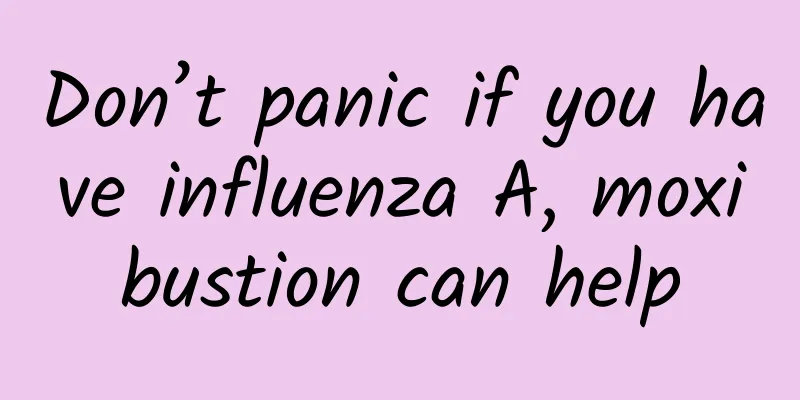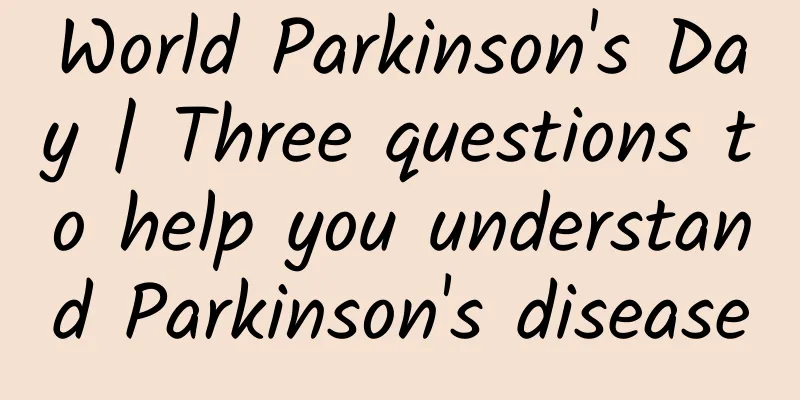Don’t panic if you have influenza A, moxibustion can help

|
This is the 4304th article of Da Yi Xiao Hu 1. Introduction to influenza A Influenza A (hereinafter referred to as influenza A) is an acute respiratory infectious disease caused by infection with influenza A virus. It is prone to occur in spring and winter. H1N1 and H3N2 viruses are common in clinical practice. The incubation period is usually 1 to 3 days. Typical patients have an acute onset, with fever as the first symptom, manifested as rapid fever, which can reach above 38°C in a few hours, accompanied by chills, chills, sore throat, runny nose, nasal congestion, cough, sputum, headache, body aches, and fatigue. Some cases experience vomiting, diarrhea, fatigue, and conjunctival congestion. Fever generally lasts for 2 to 3 days. Severe patients have a rapid onset, with body temperature rising rapidly to above 39°C and continuing for more than 3 days. Respiratory symptoms are significantly aggravated, with increased heart rate, rapid breathing, cyanosis of the lips, and worsening asthma. Mental symptoms such as slow reaction, drowsiness, and agitation may also occur. A few cases progress rapidly, with respiratory failure and multiple organ dysfunction. This disease can induce the aggravation of the original underlying disease, present corresponding clinical manifestations, and even cause serious illness and lead to the death of the patient. 2. Etiology and pathogenesis Traditional Chinese medicine believes that influenza A is caused by the six evils and seasonal pathogens that invade the lung defense, resulting in disharmony between the defense and the surface, failure of the lung to clear and purify, and imbalance of yin and yang in the body. "Suwen·Yujizhenzanglun Chapter 19" says: "Therefore, wind is the root of all diseases. Now the wind and cold invade the human body, making the hair stand up straight, the skin close and hot. At this time, sweat and hair can be released; or numbness, swelling and pain can be removed by ironing, moxibustion and acupuncture." Ironing and moxibustion are closely related to moxibustion. Therefore, it can be seen that moxibustion has a long history and good results in the treatment of influenza A. 3. Moxibustion treatment 1. Moxibustion operation Use gentle moxibustion, keep the burning end of the moxa stick 2-3cm away from the skin of the moxibustion site, until it is warm but not painful, 1-2 times a day, each time for 15 minutes; 2. Effects of moxibustion Moxibustion acts on various acupoints, and the combination of acupoints has the effects of promoting qi and dispersing wind, relieving exterior symptoms, clearing heat and relieving pain, promoting lung function and relieving cough, and replenishing yang and nourishing yin. Moxibustion acupoints with moxa sticks, the medicinal power and heat of the moxa sticks give the body warm stimulation, through the action of meridians and acupoints, the balance of the meridians inside and outside is restored, it can open the pores, expel evil spirits, dredge the meridians, regulate the Ying and Wei, harmonize the internal organs, warm the meridians, warm and dissipate the cold evil, improve the patient's qi, blood and meridians, support yang and consolidate deficiency, expel evil spirits and strengthen the body, play a role in regulating the body's yin and yang balance and enhancing immunity. (III) Commonly used acupoints 1. Hegu: On the back of the hand, at the midpoint of the radial side of the second metacarpophalangeal joint. Place the transverse line of the interphalangeal joint of the thumb of one hand on the web between the thumb and index finger of the other hand. The acupoint is below the tip of the thumb. 2. Quchi: elbow area, the midpoint of the line connecting Chize and the lateral epicondyle of humerus. 3. Fengfu: the posterior area of the neck, below the external occipital protuberance, in the depression between the trapezius muscles on both sides. 4. Dazhui: Spinal region, in the depression below the spinous process of the 7th cervical vertebra, on the posterior midline. 5. Body column: spinal column area, in the depression below the spinous process of the third thoracic vertebra, on the posterior midline. 6. Fengchi: The posterior neck area, below the occipital bone, in the depression between the upper end of the sternocleidomastoid muscle and the upper end of the trapezius muscle. 7. Jianjing: Scapular area, the midpoint of the line connecting the 7th cervical spinous process and the lateralmost point of the acromion. 8. Feishu: Spinal column area, below the spinous process of the third thoracic vertebra, 1.5 inches lateral to the posterior midline. 4. Precautions for moxibustion 1. The single moxibustion time should not be too long to prevent burns; 2. When performing moxibustion, be careful to avoid flammable objects to prevent fire; 3. After moxibustion, you can drink hot water, but avoid drinking cold water; 4. For those with insensitive skin, place the index and middle fingers on both sides of the moxibustion site to sense the temperature, so as to achieve the best effect without scalding the skin; 5. Prevention of influenza A 1. Pay attention to personal hygiene, develop good personal hygiene habits, wash hands and take a bath frequently, do not share towels, cups and other daily necessities, and do not spit anywhere to prevent contact and spread of influenza viruses. 2. Living rooms and offices should be ventilated frequently to reduce the number of bacteria and viruses accumulated indoors and maintain fresh air indoors. 3. During the epidemic period, try to avoid going to public places, such as shopping malls, cinemas and other crowded places. Keep a distance of more than 1 meter from people who sneeze. 4. When you go to the hospital for treatment, it is best to wear a mask. Respiratory diseases are mostly transmitted through the air, and most patients who go to the hospital are patients with various diseases and are easily infected. Wearing a mask can effectively block bacteria and viruses. At the same time, washing hands frequently can also play a certain role in preventing influenza. 5. Be sure to add or remove clothes appropriately according to changes in temperature to prevent low immunity caused by colds and chills. 6. Pay attention to balanced nutrition in your daily diet, eat regularly and regularly, drink plenty of water, don’t smoke, and drink less. At the same time, ensure adequate sleep and avoid overwork. 7. Strengthen physical exercise and regularly engage in outdoor sports to enhance your body's resistance. Author: School of Acupuncture, Massage and Rehabilitation, Hunan University of Chinese Medicine Professor Chang Xiaorong's team Author: Li Zuqiang |
<<: What should I do if my wisdom teeth hurt? Just know these points
>>: Why does nipple secretion occur?
Recommend
What are the pre-pregnancy check-ups?
Out of consideration for their children's hea...
Can white radish and ginger soup cure cough? What kind of cough is suitable for salt-steamed oranges?
Cough is a common symptom of discomfort in winter...
Why do I feel itchy in my private parts during menstruation?
Women's private parts are very delicate, and ...
What is pelvic effusion and does it affect pregnancy?
Pelvic effusion refers to the fluid in the pelvic...
Why do I always have leucorrhea?
Female friends will not have leucorrhea only afte...
What should a 30-year-old woman do if she is sexually frigid?
30 years old is a passionate age and people are e...
What causes vaginal itching and odor?
More and more people are suffering from vaginal i...
Is heartburn caused by drinking alcohol a problem with the stomach or the esophagus? What should I do if I have heartburn the next day after drinking alcohol?
The Chinese New Year is coming soon and people wi...
Female pseudo-genital wetness symptoms pictures
Three months ago, some small bumps appeared on my...
Are birth control pills "sterilizing drugs" or do they make people "sexually indifferent"? Debunking four myths about birth control pills
gossip Oral contraceptives are a common form of c...
What to do if you have a poor appetite during pregnancy
Poor appetite is a common symptom. The occurrence...
What are the causes of beige vaginal discharge?
From the word "leucorrhea" we can rough...
Is there any way to make breasts bigger?
We all know that every woman hopes to have a devi...









